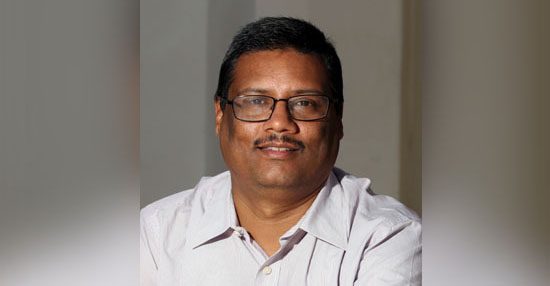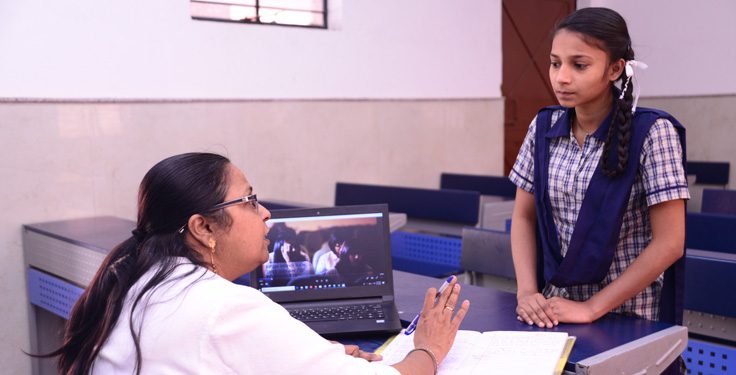 Go Back
Go BackShare
“SEQI is a forward-looking instrument”: NITI Aayog’s Alok Kumar explains how the new index can help states improve education
By Priyanka Kumar
Oct 30, 2019
In order to facilitate the provision of quality education in India, NITI Aayog launched the School Education Quality Index (SEQI) last month, which evaluates the performance of states and union territories in the school education sector based on various indicators.
n order to facilitate the provision of quality education in India, NITI Aayog launched the School Education Quality Index (SEQI) last month, which evaluates the performance of states and union territories in the school education sector based on various indicators. The index aims to shift the focus to learning outcomes and help states identify their strengths and weaknesses in order to be able to design better policy interventions.
Given its importance, we spoke to NITI Aayog’s Adviser Alok Kumar to understand more about this new initiative by the central government’s think tank, and how it can drive improvements in learning levels, access, equity and governance processes through a spirit of “competitive and cooperative federalism.”

CSF: The release of SEQI is a great step in the right direction. What are the key gaps in school education that SEQI aims to address?
Alok: There is general consensus that India has made incredible progress in terms of attaining universal access to education, especially at the primary level. The Gross Enrolment Ratio has been consistently above 95% in the last decade, owing to the success of policies such as the Sarva Shiksha Abhiyan, the Mid-Day Meal Scheme as well as the Right to Education Act. However, there has not been commensurate improvement in quality, as indicated by our learning outcomes. This is the biggest gap that SEQI aims to address. With about 50% weightage on learning outcomes, SEQI ensures that the focus of the system shifts from input parameters towards the delivery of outcomes.
All indicators have been chosen after a very exhaustive and collaborative process including stakeholders at all levels of government – the states/UTs and the Centre along with the Ministry of Human Resource Development (MHRD), experts and the World Bank. These indicators cover very crucial aspects in access, equity, infrastructure and facilities as well as governance processes, and are weighted in accordance to their role in facilitating the delivery of quality education.
SEQI is also a forward-looking instrument. Through the inclusion of indicators pertaining to computer-aided learning, vocational education, as well as transparent online systems for attendance, recruitment, etc., SEQI strongly encourages states/UTs to adopt transformative reform that will establish an education system which caters to the evolving needs of the 21st century.
With about 50% weightage on learning outcomes, SEQI ensures that the focus of the system shifts from input parameters towards the delivery of outcomes.
CSF: How have states responded to the SEQI report? What are some of the pathways planned to continue engaging with states on the index?
Alok: NITI Aayog has consistently engaged with states throughout the development of the index – right from the selection of the indicators to the finalization of data. We are thrilled that the response to the index has been positive. SEQI is unique as it provides a ranking of states on the basis of their overall performance as well as their progress over time. The index’s indicator-level analysis is also useful for states to clearly identify their strengths and weaknesses. The insights from SEQI will, thus, be used to guide policy action at the state level. SEQI has been developed in line with our firm belief in the role of competitive and cooperative federalism to spearhead transformation.
As a next step, NITI Aayog will soon be engaging with states/UTs to seek their views on how they are using SEQI to undertake course corrections and innovation, as well as to receive their feedback on the index. It will be our consistent endeavour to strengthen the index to provide requisite support to states, as they are the key beneficiaries driving the implementation of crucial reform.

CSF: What are the future plans for SEQI, both in terms of refining and iterating the index and also in terms linking the index to funding?
Alok: SEQI is envisioned as a dynamic instrument that will continue to evolve. Over time, the relevance of the indicators as well as data availability for new indicators will be factored into the index design. We will analyze the linkage between policy action and the indicators to ensure that SEQI is able to capture the efforts made by states/UTs to improve school education.
We definitely foresee the use of SEQI as a tool for performance-linked devolution of funds to states and UTs. NITI Aayog is making all efforts to ensure that this is implemented at the earliest.
The index’s indicator-level analysis is useful for states to clearly identify their strengths and weaknesses and guide policy action at the state level.
CSF: Given that ~40% of children in India are enrolled in private schools, the journey to improve learning in the country cannot be one that does not take along private schools. Are there any plans for the index to include these students in future rankings?
Alok: SEQI uses learning outcomes data from the National Achievement Survey (NAS), which is a competency-based assessment across government schools, representing the status of education for a majority of students in the country. While this data does provide a general picture of the status of quality education, it would certainly be beneficial to have learning data for private schools, which have 33.2% of our students. I believe that the Ministry of Human Resource Development (MHRD) is seized of the matter and is considering measures to include learning data for private school students too, just as it has done for UDISE (Unified District Information on School Education), which includes data relating to private schools.
We need to have standardization of data to ensure comparability and ability to measure progress over time.
CSF: How do you envision states balancing and reconciling the existence of two concurrent indices, i.e., Performance Grading Interest (PGI) and SEQI? Do you see these two indices speaking to each other?
Alok: The PGI and SEQI have both been developed to assess the status of school education in line with the MHRD and NITI Aayog’s respective mandates. SEQI is a complete subset of the PGI, and the results of both the indices, despite slightly different methodologies of grading/ranking and weighting of indicators, are similar. Given NITI Aayog’s strong emphasis on learning outcomes, indicators have been chosen selectively and weighted differently. Yet, both the indices are aligned in their objectives of providing a credible assessment to guide state policy while simultaneously shifting the emphasis to outcomes.
CSF: Could you tell us if there were any challenges that you faced while compiling and comparing the data for the report? Going forward with the index, is there a need for the country to have a robust data system in place for school education?
Alok: The biggest challenge was non-comparability in the learning outcomes data from NAS 2014-15 and NAS 2017-18. We need to have standardization of data to ensure comparability and ability to measure progress over time.
Keywords
Authored by
Priyanka Kumar
CSF
Share this on
